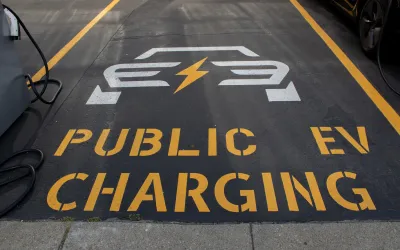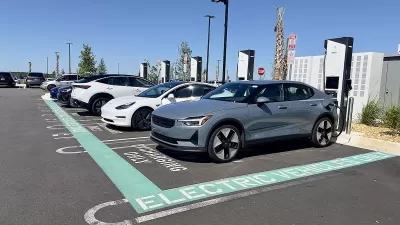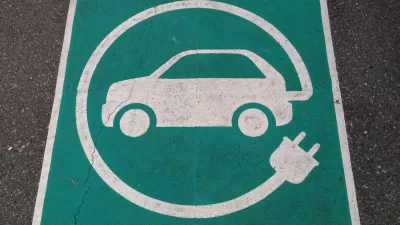Explore the future of EV charging in cities and discover urban planning strategies for integrating electric vehicle infrastructure and promoting sustainable transportation.

Electric vehicle (EV) adoption is growing worldwide, so urban planners must include them in infrastructure proposals. While some cities are expanding, others need retrofitting to fit charging stations. What innovative solutions will ensure a smooth transition?
1. Properly planning placement
Before drivers can enjoy chargers, urban planners must strategically place them. Research will determine the best locations, accounting for traffic patterns and population projections. Areas with higher EV adoption are a priority because they would use the devices most frequently.
Los Angeles is an EV-friendly city with over 72,000 chargers countywide. Urban planners scouting for new locations must consider where electric car adoption is high, such as downtown or Westlake.
2. Retrofitting existing infrastructure
Older cities may be more challenging for EVs because less room is available for cars and charging stations. Therefore, urban planners must be creative to avoid high costs and disruption. Future designs could take advantage of parking garages or repurpose old phone booths.
Boston is an excellent example, as its narrow streets and grid pattern mean some residents do not own cars. Beantown EV owners are benefiting from curbside installations in their neighborhoods.
3. Installing fast chargers
Charging an electric car requires more time than filling up a gas tank. If EV adoption grows, more drivers could wait in line and cause port congestion. Urban planners should include fast chargers in future developments to reduce session times and prevent unnecessary traffic.
Installation plans should include Tesla Superchargers, which can charge above 180 kW in the highest tier. While the devices were exclusive, they now support EVs from different brands. As technologies improve, urban planners might utilize wireless charging and other innovations.
4. Maintaining grid stability
EV growth means residents will use more electricity to charge their vehicles. How will the grid react to the increased demand? Urban planners must account for municipal power sources to avoid overloading and mass outages.
Future developments should prioritize smart chargers due to their optimization skills, ensuring each session minimizes grid impact and reduces user costs. Stabilization can also originate from renewable energy sources to manage demand efficiently.
5. Considering generational trends
Future developments may consider who will live in the area and what cars they drive. Experts say millennials are establishing themselves in the job market and growing their share as baby boomers retire. If they bring Nissan Leafs to an area, urban planners should account for their unique charging needs.
Sedans are smaller and easier to navigate through cities, but urban planners should account for trucks and SUVs. A 2024 report said the Ford F-Series is the sixth-most popular vehicle among millennials, so stations must make room for future electric trucks.
The challenges of planning charging stations
While EV adoption can make cities greener, urban planners may face obstacles in their development. They must balance accessibility, aesthetics, and sustainability without compromising. Here are a few ways they can accomplish this goal:
- Accessibility: Americans with Disabilities Act compliance and input from disability advocacy groups can shape future EV charging station planning and increase inclusiveness.
- Aesthetics: Aesthetics are integral to the urban fabric, especially the area surrounding EV chargers. Planners can incorporate bike lanes and public art.
- Sustainability: Building the charging station should include locally sourced materials and renewable energy sources, such as solar panels.
Red tape is another crucial barrier. If funding is limited, planners should utilize public-private partnerships to raise capital and leverage expertise. Public investment may become manageable through grants and tax credits that reduce deployment costs and encourage EV adoption.
Carefully crafted policy proposals are another step when building charging stations. Urban planners should incorporate chargers into existing zoning and land use policies to facilitate approval. Modifying building codes is crucial, so cities must mandate EV chargers in new constructions or building renovations.
Incorporating EV chargers into urban planning
Charging stations must grow with EV adoption, so urban planners must be mindful of their future developments. Integration starts with optimal placement, though professionals should consider smart technology and renewable energy. Building for the long term will help community sustainability and adoption as more electric cars enter the fold.

Alabama: Trump Terminates Settlements for Black Communities Harmed By Raw Sewage
Trump deemed the landmark civil rights agreement “illegal DEI and environmental justice policy.”

Planetizen Federal Action Tracker
A weekly monitor of how Trump’s orders and actions are impacting planners and planning in America.

The 120 Year Old Tiny Home Villages That Sheltered San Francisco’s Earthquake Refugees
More than a century ago, San Francisco mobilized to house thousands of residents displaced by the 1906 earthquake. Could their strategy offer a model for the present?

Housing Vouchers as a Key Piece of Houston’s Housing Strategy
The Houston Housing Authority supports 19,000 households through the housing voucher program.

Rural Population Grew Again in 2024
Americans continued to move to smaller towns and cities, resulting in a fourth straight year of growth in rural areas.

Safe Streets Grants: What to Know
This year’s round of Safe Streets for All grant criteria come with some changes.
Urban Design for Planners 1: Software Tools
This six-course series explores essential urban design concepts using open source software and equips planners with the tools they need to participate fully in the urban design process.
Planning for Universal Design
Learn the tools for implementing Universal Design in planning regulations.
Clanton & Associates, Inc.
Jessamine County Fiscal Court
Institute for Housing and Urban Development Studies (IHS)
City of Grandview
Harvard GSD Executive Education
Toledo-Lucas County Plan Commissions
Salt Lake City
NYU Wagner Graduate School of Public Service






























